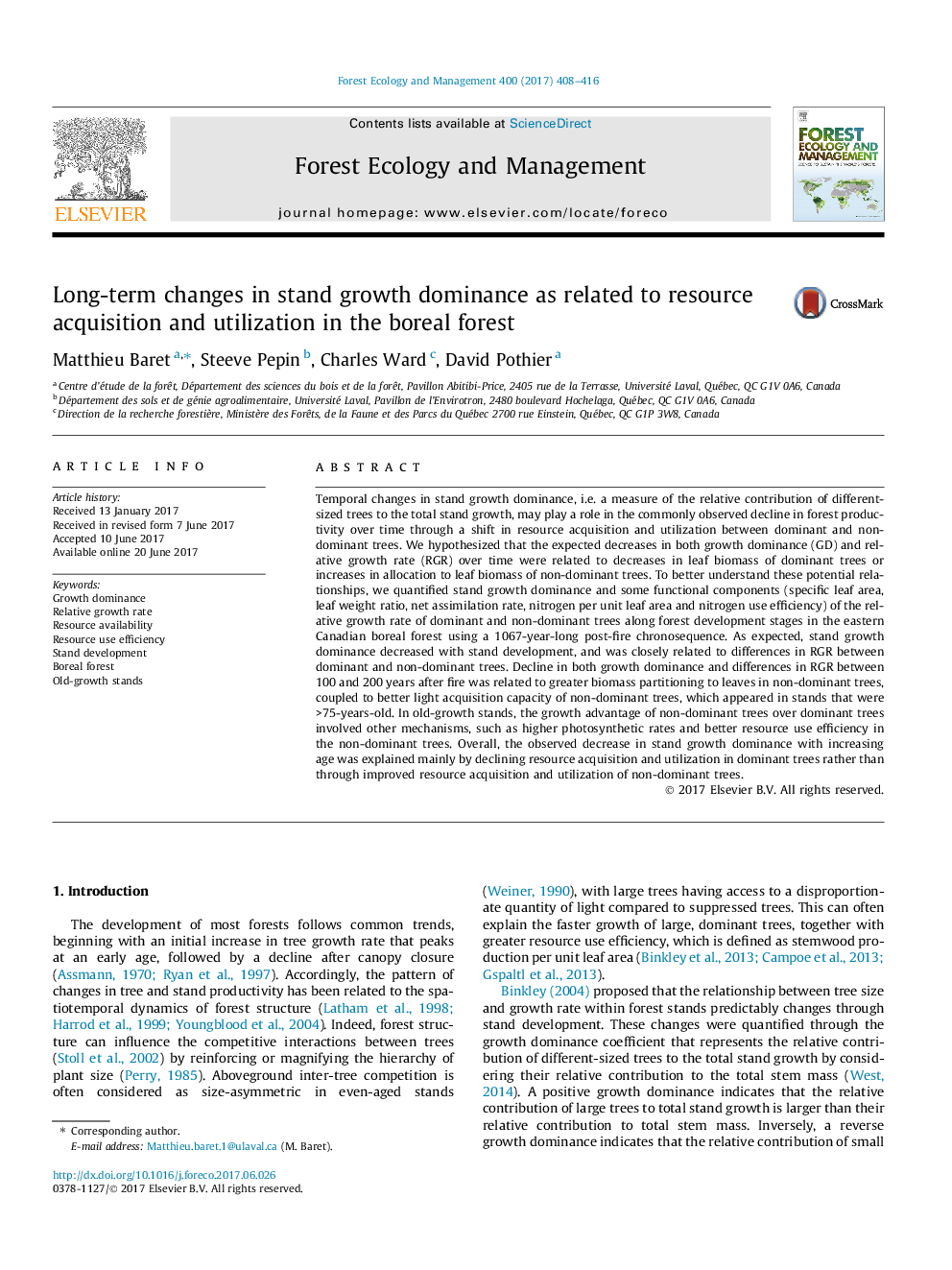| کد مقاله | کد نشریه | سال انتشار | مقاله انگلیسی | نسخه تمام متن |
|---|---|---|---|---|
| 6459268 | 1421358 | 2017 | 9 صفحه PDF | دانلود رایگان |
Temporal changes in stand growth dominance, i.e. a measure of the relative contribution of different-sized trees to the total stand growth, may play a role in the commonly observed decline in forest productivity over time through a shift in resource acquisition and utilization between dominant and non-dominant trees. We hypothesized that the expected decreases in both growth dominance (GD) and relative growth rate (RGR) over time were related to decreases in leaf biomass of dominant trees or increases in allocation to leaf biomass of non-dominant trees. To better understand these potential relationships, we quantified stand growth dominance and some functional components (specific leaf area, leaf weight ratio, net assimilation rate, nitrogen per unit leaf area and nitrogen use efficiency) of the relative growth rate of dominant and non-dominant trees along forest development stages in the eastern Canadian boreal forest using a 1067-year-long post-fire chronosequence. As expected, stand growth dominance decreased with stand development, and was closely related to differences in RGR between dominant and non-dominant trees. Decline in both growth dominance and differences in RGR between 100 and 200Â years after fire was related to greater biomass partitioning to leaves in non-dominant trees, coupled to better light acquisition capacity of non-dominant trees, which appeared in stands that were >75-years-old. In old-growth stands, the growth advantage of non-dominant trees over dominant trees involved other mechanisms, such as higher photosynthetic rates and better resource use efficiency in the non-dominant trees. Overall, the observed decrease in stand growth dominance with increasing age was explained mainly by declining resource acquisition and utilization in dominant trees rather than through improved resource acquisition and utilization of non-dominant trees.
Journal: Forest Ecology and Management - Volume 400, 15 September 2017, Pages 408-416
